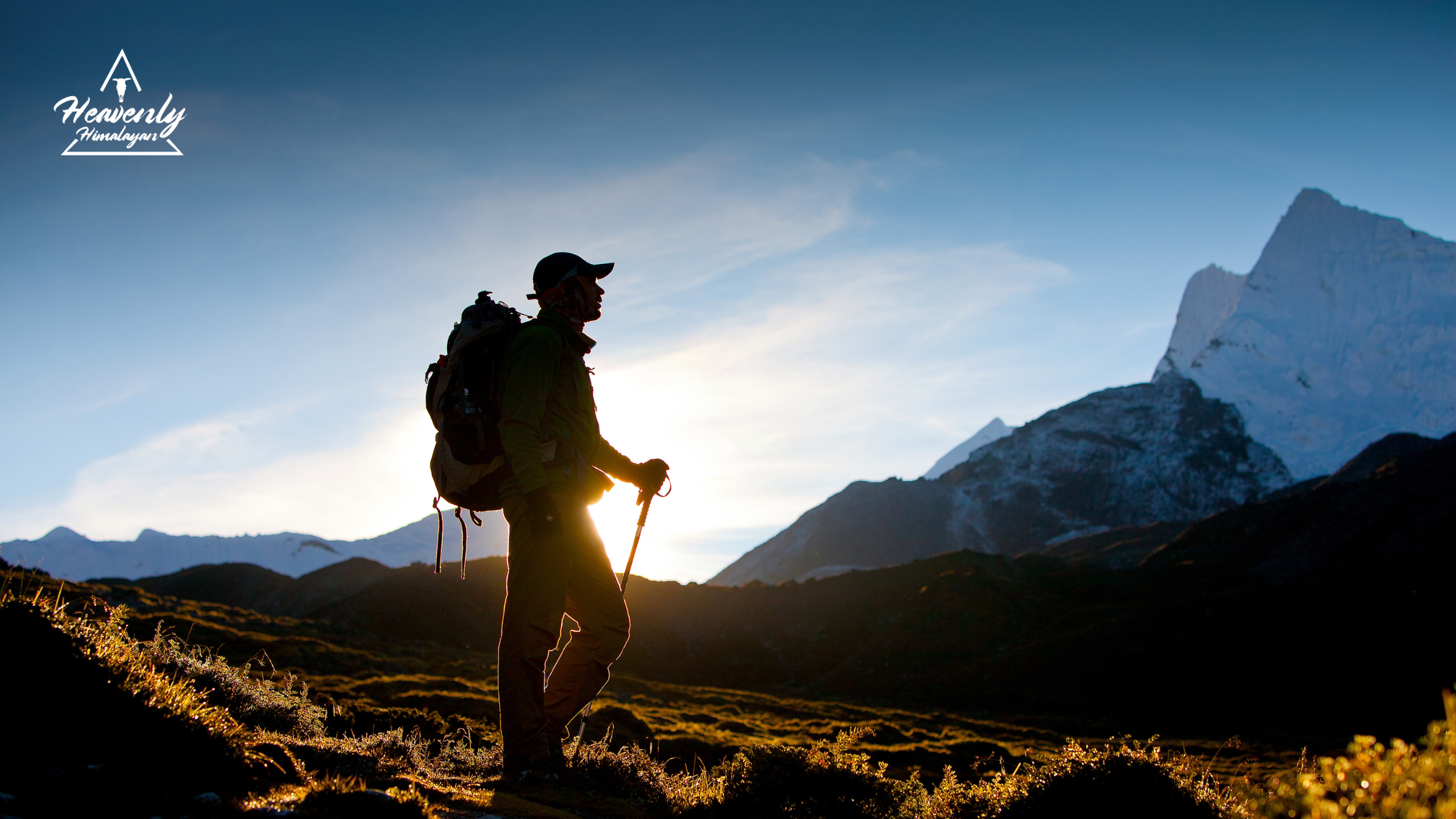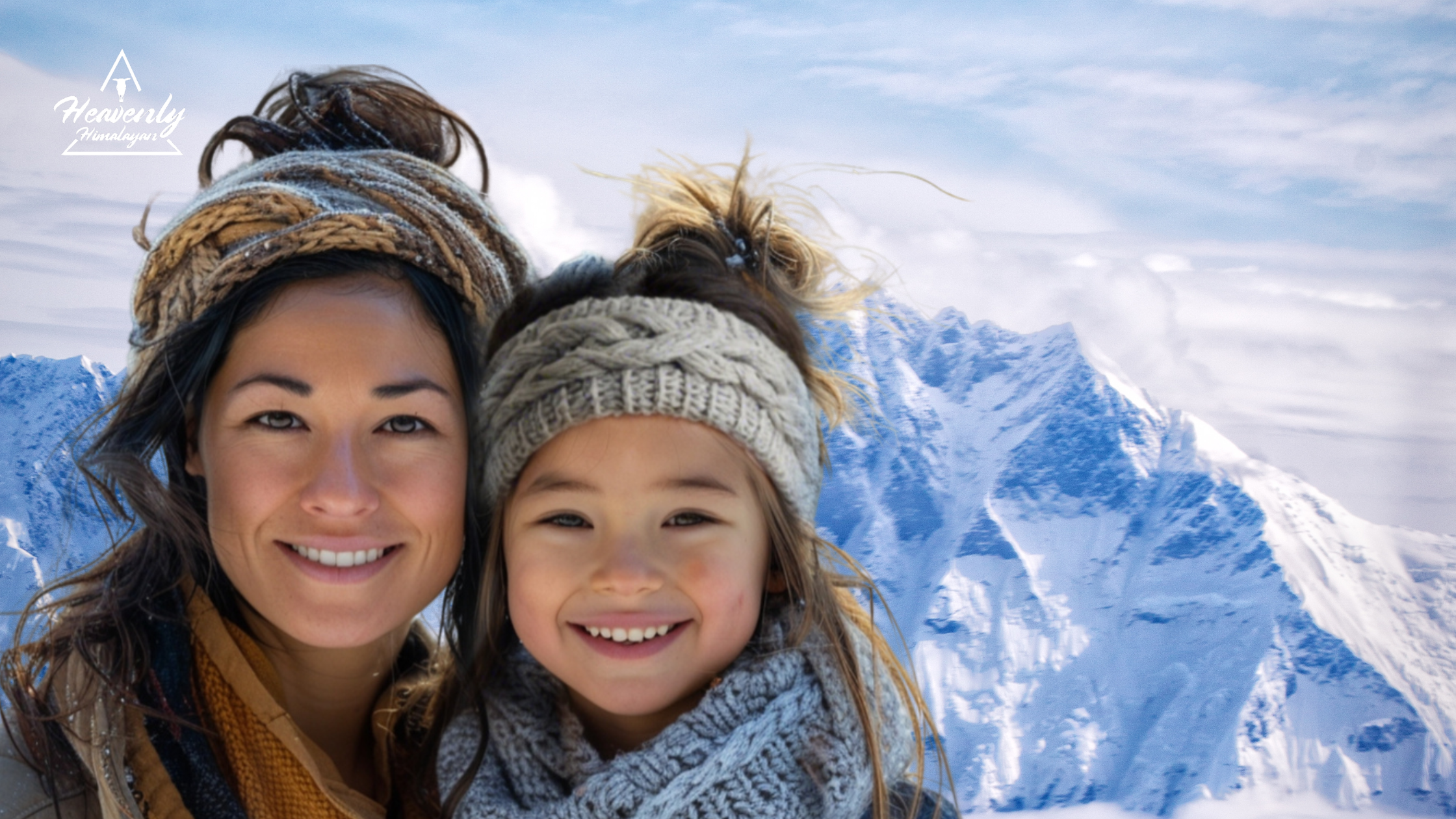Trekking Essentials You Need to Carry for Your Next Adventure
Author: Kelly Wiles, the content specialist at Heavenly Himalayan, writes interesting content that shows off the unique and handmade parts of our brand. With multiple years of experience, she focuses on the cultural importance and craft quality of our beautiful accessories.
Going on a trekking adventure in the winter or cold places is exciting and connects you with nature while testing your physical limits. To stay safe and have fun, having the right gear is crucial. This guide will cover all the essential trekking equipment for cold weather. We’ll highlight important accessories, such as Heavenly Himalayan woolen headbands for hiking to keep your head warm and manage sweat, backpacks to carry your things, and sturdy, insulated footwear to protect your feet on icy and rough trails. Using the right gear, including these woolen headbands, ensures a comfortable trek, helps avoid injuries, and prepares you for any challenges you might face in the cold.
1. Footwear: The Foundation of a Good Trek:
Hiking Boots: The right hiking boots are essential for cold weather gear. They should support, stabilize, and protect your feet from the cold. Choose waterproof and insulated boots with good ankle support and a strong, non-slip sole for icy and rough ground. Ensure they are breathable to keep your feet warm and dry without getting too hot.
Socks: Picking the right socks is important in cold weather. Get moisture-wicking, cushioned socks made from wool or good synthetic materials. These socks keep your feet dry and warm, which helps prevent blisters and discomfort. Winter socks also add extra warmth and help keep your feet at the right temperature, making your trek more comfortable even in the cold.
2. Clothing and Woolen Headbands: Layer Up for Comfort:
Base Layer: A moisture-wicking base layer is crucial for keeping sweat away from your skin in cold conditions. Opt for merino wool or synthetic materials to stay dry and comfortable. Pair this with a Heavenly Himalayan woolen headband for hiking to keep your head warm and manage sweat.
Insulating Layer: An insulating layer, such as a fleece jacket or down vest, is essential for warmth. It traps body heat while allowing moisture to escape, ensuring you stay cozy. Combine this with woolen headbands for extra warmth around your head.
Outer Layer: A waterproof and windproof jacket and pants protect you from the elements. Choose breathable fabrics to avoid overheating. Woolen headbands complement this setup by adding warmth and preventing heat loss from your head.
3. Backpacks: Carry Your World:
Daypack: For short treks or day hikes in cold weather, a 20-30 liter daypack is best. It should have padded shoulder straps, a hip belt, and several pockets to organize your gear. Adding a small pocket for storing a Heavenly Himalayan woolen headband and other winter items is also helpful.
Trekking Backpack: Pick a backpack with 40-60 liters for long hikes in cold weather. Make sure it has adjustable straps for a comfy fit and to distribute the weight evenly. Look for pockets that keep winter gear, like woolen headbands, safe and easy to reach.
4. Navigation and Safety: Stay on Track:
Map and Compass: Always have a detailed map and a compass to help with navigation. GPS devices are handy but might stop working or lose power, so use maps and a compass as backup tools.
GPS Device: A handheld GPS device or a smartphone with offline maps can be very helpful for knowing where you are and finding your way. It can also add extra safety in new places.
First Aid Kit: A good kit is important for any hike. It should contain bandages, antiseptic wipes, blister treatments, pain medicine, and any personal medicines needed for injuries or health problems.
5. Hydration and Nutrition: Fuel Your Adventure:
Water Bottles or Hydration System: Staying hydrated is very important when hiking, even in cold weather. Use water bottles or a hydration bladder to get water easily. If hiking in places with unsure water sources, bring a water filter or purification tablets to ensure the water is safe to drink.
Snacks and Meals: For energy, bring lightweight snacks like nuts, dried fruit, and energy bars. Pack dehydrated meals and a small stove to cook hot food for long trips. Staying hydrated and eating well will keep energy high and help handle any challenge.
6. Sleeping Gear: Rest is Essential:
Sleeping Bag: A good night’s rest is key for a successful trek, especially in cold weather. Down sleeping bags are warm and light, ideal for freezing, dry conditions. Synthetic bags are better for wet environments, retaining warmth even when wet.
Sleeping Pad: A good sleeping pad keeps you warm and comfortable by blocking cold from the ground. Inflatable pads are light and easy to carry, while foam pads are durable for rough trails, ensuring a restful night’s sleep.
7. Trekking Poles: Extra Support:
Trekking poles help maintain balance on rough paths, provide extra support, and relieve knee pressure during long hikes. They are also useful when crossing rivers, going downhill, or walking on tough trails, making trekking safer and easier.
8. Headbands and Accessories: Small but Important:
Headbands do more than look good; they are essential outdoor winter accessories. They keep sweat out of your eyes, protect your ears from the cold, and add style to your trekking gear. Choose headbands that dry quickly and wick away moisture for added comfort. Also, a wide-brimmed hat shields you from the sun, while a warm beanie and gloves are crucial in cold weather. Don’t forget sunglasses to protect your eyes from UV rays and glare.
FAQs:
Q 1. What type of hiking boots are best for cold weather trekking?
Ans. For cold-weather trekking, choosing waterproof and insulated hiking boots is important. Look for boots with good ankle support and a sturdy, non-slip sole to handle icy and rough terrain. Breathable materials are also crucial to keep your feet warm and dry.
Q 2. Why are woolen headbands important for winter trekking?
Ans. Woolen headbands from Heavenly Himalayan are key for winter trekking. They keep your head warm, manage sweat, and prevent heat loss, making your trek more comfortable in cold weather.
Q 3. What should I include in my trekking clothing layers for cold weather?
Ans. For cold weather trekking, wear a base layer of merino wool or synthetic material, add an insulating layer like a fleece jacket or down vest, and top it off with waterproof, windproof outerwear.
Q 4. How should I pack my backpack for a winter trek?
Ans. For a winter trek, use a small daypack for short trips or a larger backpack with adjustable straps for longer hikes. Ensure it has pockets for organizing gear and easy access to winter essentials like woolen headbands.
Q 5. What should I bring for hydration and nutrition on a cold-weather trek?
Ans. Carry water bottles or a hydration bladder. Use a water filter if needed. Pack snacks like nuts and dried fruit. For long treks, bring dehydrated meals and a small stove.
Getting ready for a trekking adventure means more than just physical training. Having the right gear is key to staying safe, comfortable, and enjoying the trip. Essential items include strong hiking boots, layered clothing, a good backpack, and useful accessories like headbands. Each piece of trekking gear essentials plays a crucial role in a good trekking experience. With the right equipment, a memorable and rewarding trail adventure will follow. For the Comfortable winter wool headbands, visit us now at heavenlyhimalayan.com.
For more detail contact us👇:
📞 Phone: +1 (201) 254 5242
📧 Email: ellie@heavenlyhimalayan.com




